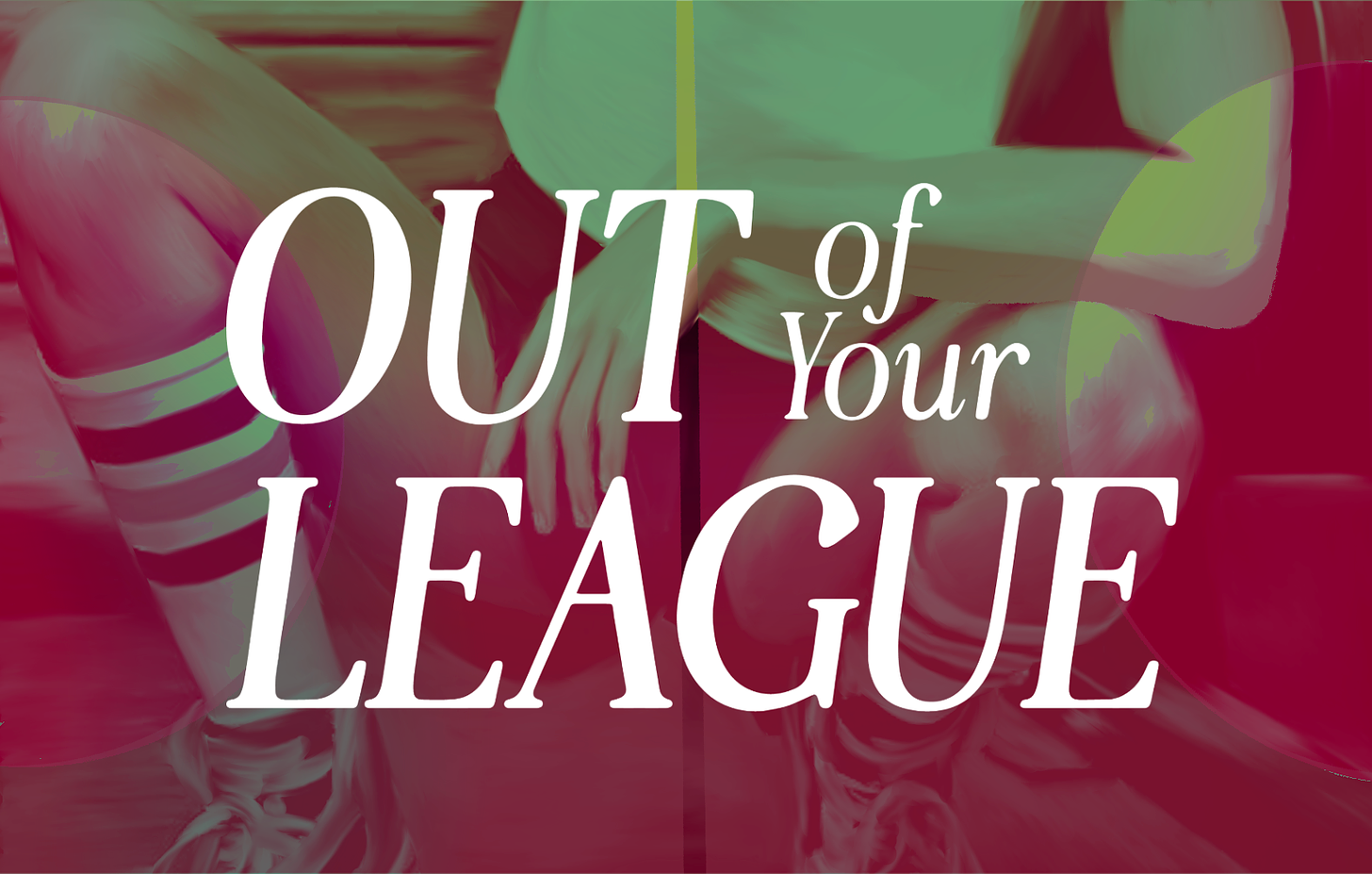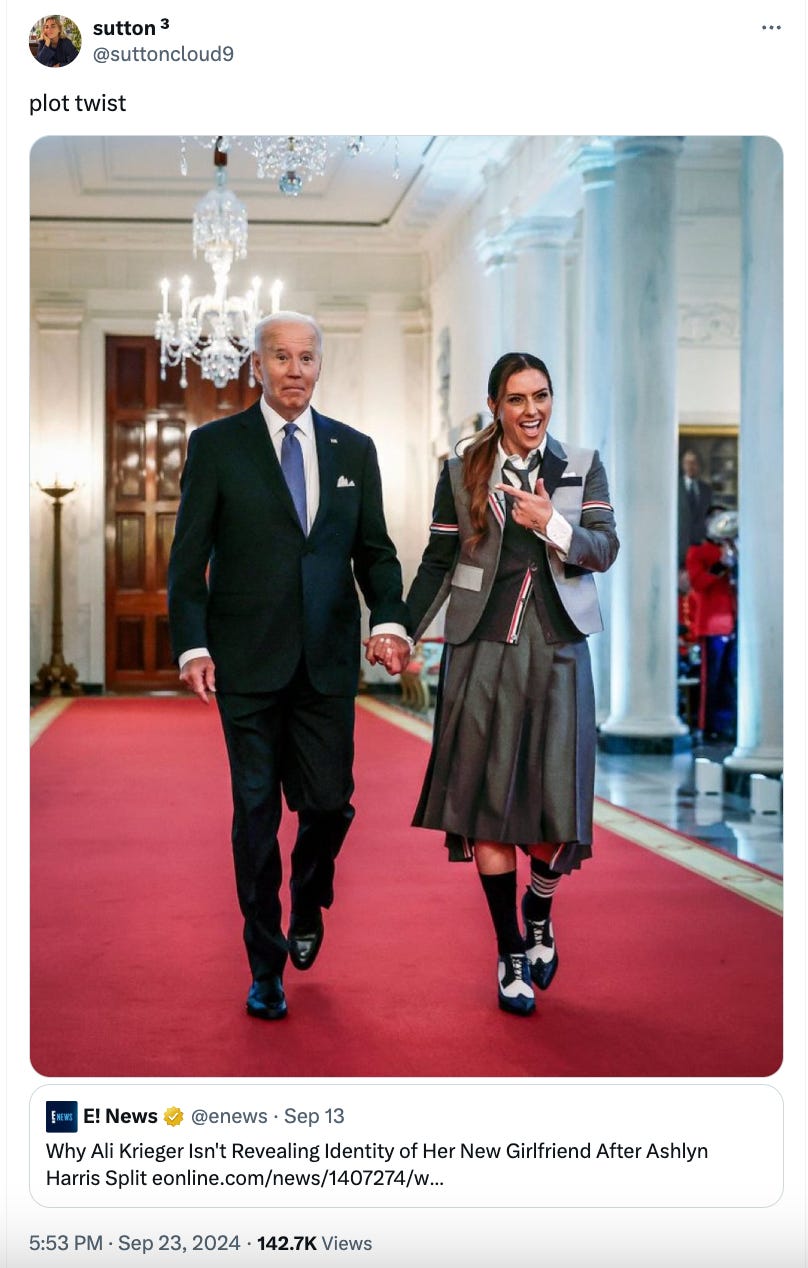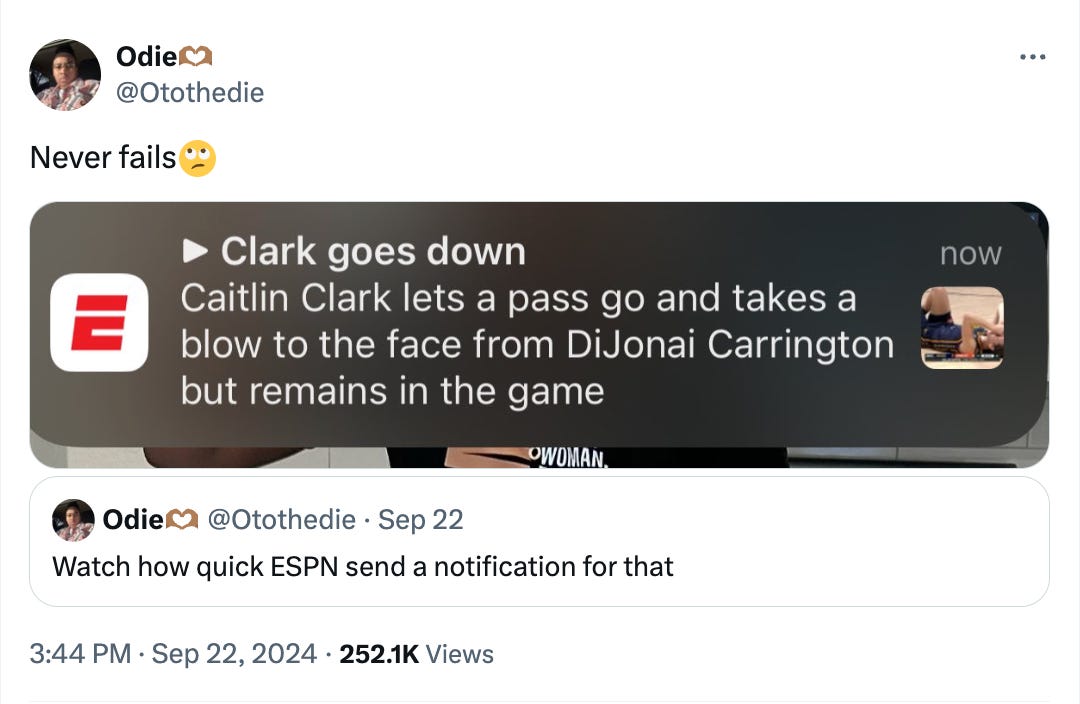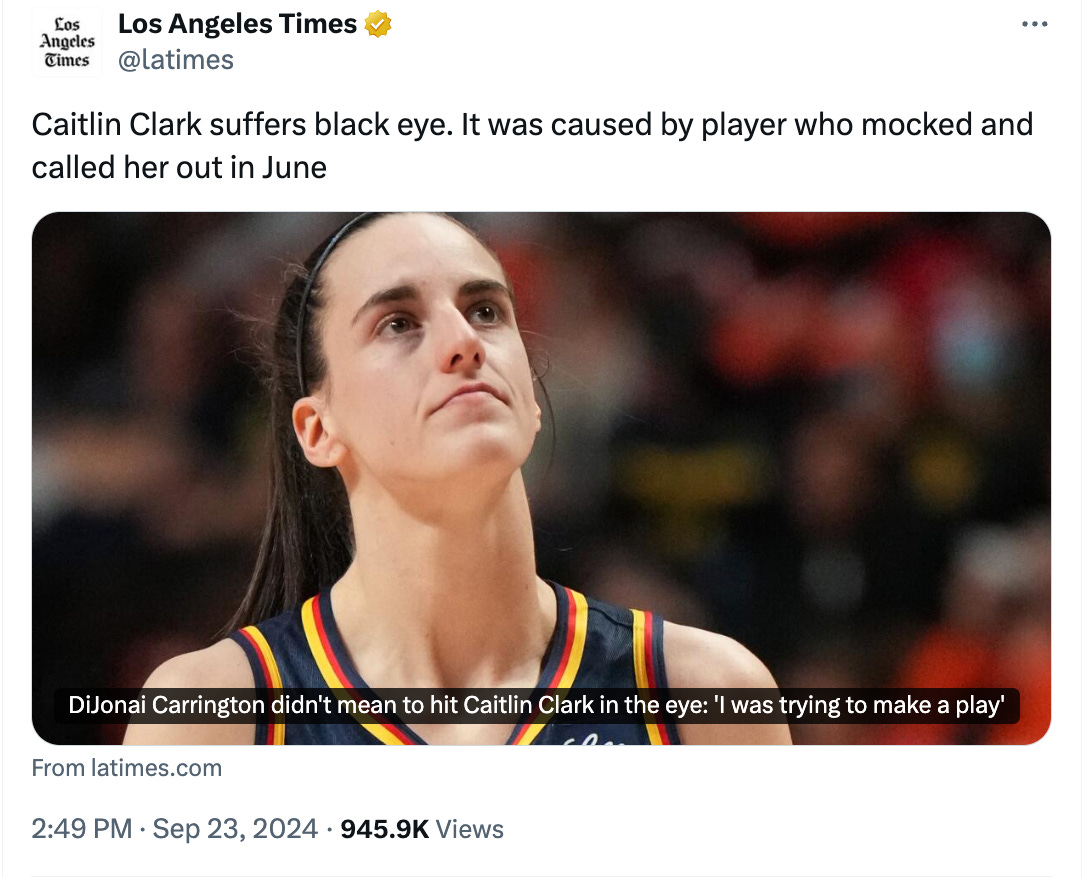Today’s newsletter consists of a few short rants and a grab bag of WNBA-related memes and links. It is the playoffs, after all. If you’re not already a paid subscriber, I hope you’ll consider upgrading.
hear me out: the Olivia Nuzzi ethics nightmare relates to sports media, too
Unless you’ve been offline in a way that I deeply envy, you have probably heard about the Olivia Nuzzi/Robert Kennedy, Jr. sexting scandal. Just in case you’re lucky enough to not know what I’m talking about, last week Oliver Darcy reported that Nuzzi’s bosses at New York magazine had approached her regarding a personal relationship she had developed with RFK, Jr. Nuzzi profiled the former presidential candidate earlier this year and was continuing to cover electoral politics, making a relationship with RFK a pretty clear conflict of interest.
At least, I thought it was a pretty clear violation of journalistic ethics that most, if not all, journalists would agree was wrong. Except, as
details over at , many establishment journalists have bent over backwards to defend Nuzzi and circle the wagons in her defense.“Who the fuck cares who [Olivia Nuzzi] is seeing in her private time?” asks political commentator Ben Tribbett. “The scandal here has nothing to do with who she dates or sends photos to,” Molloy explains. “I truly couldn’t care less. The scandal here is that she was doing all of this while presenting herself as a neutral observer of the presidential race.”
Over and over again we see people at legacy media outlets violating journalistic ethics or just being very bad at their jobs with little-to-no repercussions for it. As my friend and brilliant sports writer Sydney Bauer pointed out on X, those of us who are queer or trans or a person of color are seen as “biased” or having conflicts of interest simply for covering people in our own community, yet legacy journalists are out here doing whatever the fuck they want.
Which brings me back to sports journalism and the ongoing mess that is this season’s WNBA coverage. Instead of allowing longtime women’s sports writers to have access to the jobs or stories from the league(s) they’ve spent years covering, too many journalists who have never written about the WNBA or women’s basketball have parachuted in. The result is coverage that is not only devoid of the history, context, and culture of the league, but coverage that is actively harmful to the W and the players who are in it.
I wrote about this earlier in the season, arguing that the coverage of Caitlin Clark is rooted not only in racism, but in the homophobic tropes of the predatory lesbian and the queer villain. “Portraying Clark as the victim in her interactions with fellow players is an extension of this idea that a certain kind of woman should be safe to play and excel in women’s sports,” I wrote at Andscape. “It not only relies on the concept of white female victimhood but also of predatory lesbians.”
After the Connecticut Sun faced off against Clark’s Indiana Fever in Game 1 of the first round of the playoffs on Sunday, coverage took on a similarly upsetting tone. Christine Brennan of USA Today, a longtime gymnastics and figure skating journalist who only began covering women’s basketball this season, asked Sun guard DiJonai Carrington if she had intentionally given Clark a black eye (anyone who watched the game could see clearly it was unintentional and happened during a basketball play) and also suggested that Carrington and her teammates were laughing at Clark after the swipe (the players were very clearly doing a Carmelo Anthony three-point celebration, something that anyone reporting on basketball should be obligated to know). Brennan’s coverage has been problematic all season (something she blocked me for pointing out to her) but it goes beyond just her.
In a game that saw Alyssa Thomas record a triple double, Marina Mabrey break the WNBA playoff record for points off the bench, and the Sun winning by 24 points, coverage focused almost exclusively on one player—and one play.
Being ignorant of the culture and history of the WNBA should disqualify journalists from covering it—especially if they are unwilling to learn about the space they’re stepping into. The number of times I read WNBA coverage that seems like it was written by someone who, frankly, hates Black women is inexcusable—especially in a league that is over 80% Black.
“New fans, media, personalities, and voices to the [WNBA] space should… rise to the occasion and meet the standards of [coverage] where the bar is at,” writes Lyndsey D’Arcangelo at Awful Announcing. “Taking steps backward just because that’s been the status quo in men’s leagues isn’t how the WNBA operates. It shouldn’t be how any women’s sports league operates.”
My social media timelines over the past week have been full of righteous fury—mostly from marginalized or independent journalists who have been toiling away for years, doing incredible work that they are hardly ever recognized for. I am furious, too, but more than that I’m just tired.
Speaking of the problematic way that the media talks about Caitlin Clark in relationship to her Black teammates and opponents…
I am deeply uncomfortable with dynamic on the Indiana Fever in which the Black players are responsible for de-escalating the white women who can’t keep their tempers
Keep reading with a 7-day free trial
Subscribe to Out of Your League to keep reading this post and get 7 days of free access to the full post archives.








